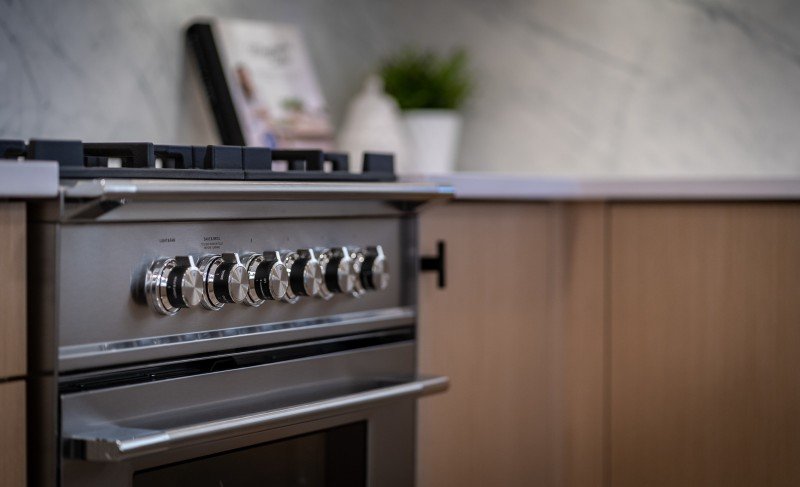Understanding Hobs and Ovens: The Essential Kitchen Appliances
In the realm of kitchen home appliances, few products are as important as hobs and ovens. These appliances form the foundation of cooking activities, enabling people to produce everything from easy meals to elaborate banquets. Comprehending the differences, types, and performances of hobs and ovens can significantly boost one's cooking experience. This post explores the intricacies of hobs and ovens, offering insights that deal with both newbie and skilled cooks.
What Is a Hob?
A hob, often described as a cooktop or range top, is the flat surface on which pots and pans are positioned for cooking. Hobs are equipped with heating aspects that generate the required heat for cooking food. They come in different kinds, consisting of gas, electric, induction, and ceramic alternatives. Each type offers special advantages and disadvantages.

Kinds of Hobs
Gas Hobs:
- Heat Source: Natural gas or propane.
- Advantages: Instant heat control and responsiveness, chosen by many chefs for exact cooking.
- Downsides: Requires a gas connection and can be less energy-efficient.
Electric Hobs:
- Heat Source: Electric coils or smooth glass-ceramic surface areas.
- Benefits: Generally simpler to clean up, even heating, and commonly available.
- Downsides: Slower to heat up and cool down compared to gas.
Induction Hobs:
- Heat Source: Electromagnetic currents.
- Advantages: Quick heating, energy-efficient, and only warms the pots and pans, not the surrounding surface area.
- Drawbacks: Requires suitable pots and pans (ferrous materials).
Ceramic Hobs:
- Heat Source: Electric and has a smooth glass surface.
- Advantages: Sleek appearance, easy to tidy, and even heating.
- Downsides: Can take longer to warm up and cool down.
What Is an Oven?
An oven is an enclosed home appliance that cooks food by surrounding it with dry heat. Ovens can be standalone systems or combined with hobs in a single device called a variety. Ovens are flexible tools that can be used for baking, roasting, broiling, and more.
Kinds of Ovens
Standard Ovens:
- Heat Source: Electric or gas.
- Advantages: Good for conventional baking and roasting.
- Downsides: Can have unequal heat distribution.
Convection Ovens:
- Heat Source: Electric or gas with a fan for distributing air.
- Benefits: More even cooking and faster cooking times due to air flow.
- Disadvantages: Can be costlier and may require adjustments in cooking times.
Microwave Ovens:
- Heat Source: Microwaves.
- Benefits: Quick cooking and reheating; terrific for thawing.
- Drawbacks: Can not brown or crisp food well.
Steam Ovens:
- Heat Source: Steam generation.
- Advantages: Retains nutrients and moisture in food, much healthier cooking alternative.
- Downsides: Longer cooking times and usually greater cost.
Secret Differences Between Hobs and Ovens
While hobs and ovens serve the primary function of cooking food, their functionalities and utilizes differ substantially. The following table sums up these key differences:
| Feature | Hob | Oven |
|---|
| Cooking Method | Direct heat | Enclosed heat |
| Main Use | Boiling, sautéing, frying | Baking, roasting |
| Heat Source | Gas, electric, induction | Gas, electric, steam |
| Cooking Area | Flat surface area | Enclosed space |
| Cooking Time | Normally much faster | Varies based upon dish |
| Control & & Precision | Immediate and direct | Depend on settings and timers |
Benefits of Using Hobs and Ovens Together
Integrating the use of a hob and an oven can significantly enhance the cooking process. Here are some benefits:
- Versatility: Different types of food can be cooked at the same time.
- Efficiency: Using both enables various cooking methods, such as searing on the hob and baking in the oven.
- Time-Saving: Multi-tasking can significantly decrease general cooking time.
Upkeep and Care
To guarantee the longevity of hobs and ovens, regular upkeep is important. Here are some tips:
For Hobs:
- Clean spills right away to prevent staining.
- Use appropriate cleaners for particular materials (e.g., ceramic cleaner for glass-ceramic hobs).
- Routinely examine gas connections for leaks (for gas hobs).
For Ovens:
- Wipe down the interior after each usage to avoid build-up.
- Usage self-cleaning features if offered, or apply oven cleaners for difficult discolorations.
- Routinely inspect seals and gaskets for wear and tear (to preserve heat effectiveness).
FAQs About Hobs and Ovens
1. What is the very best kind of hob for a beginner cook?
Answer: A ceramic or electric hob is often recommended for novices due to reduce of usage and cleansing.
2. Can I utilize any cookware on an induction hob?
Response: No, induction hobs require pots and pans made from magnetic products (e.g., cast iron or stainless steel).
3. How often should I clean my oven?
Response: It is a good idea to clean your oven every couple of months, or more regularly if you utilize it often.
4. Is it much better to bake in a convection oven?
Response: Yes, convection ovens are frequently better for baking as they offer even heat circulation. However, some fragile dishes may gain from conventional ovens.
Understanding the functionality and distinctions between hobs and ovens is essential for any cooking enthusiast. Whether one chooses the instantaneous heat of a gas hob or the precision of an induction cooktop, each type uses distinct advantages. Likewise, ovens differ commonly in function, from conventional baking to steam cooking. By valuing these home appliances' functions in food preparation, cooks can boost their culinary abilities and enhance their kitchen activities.
